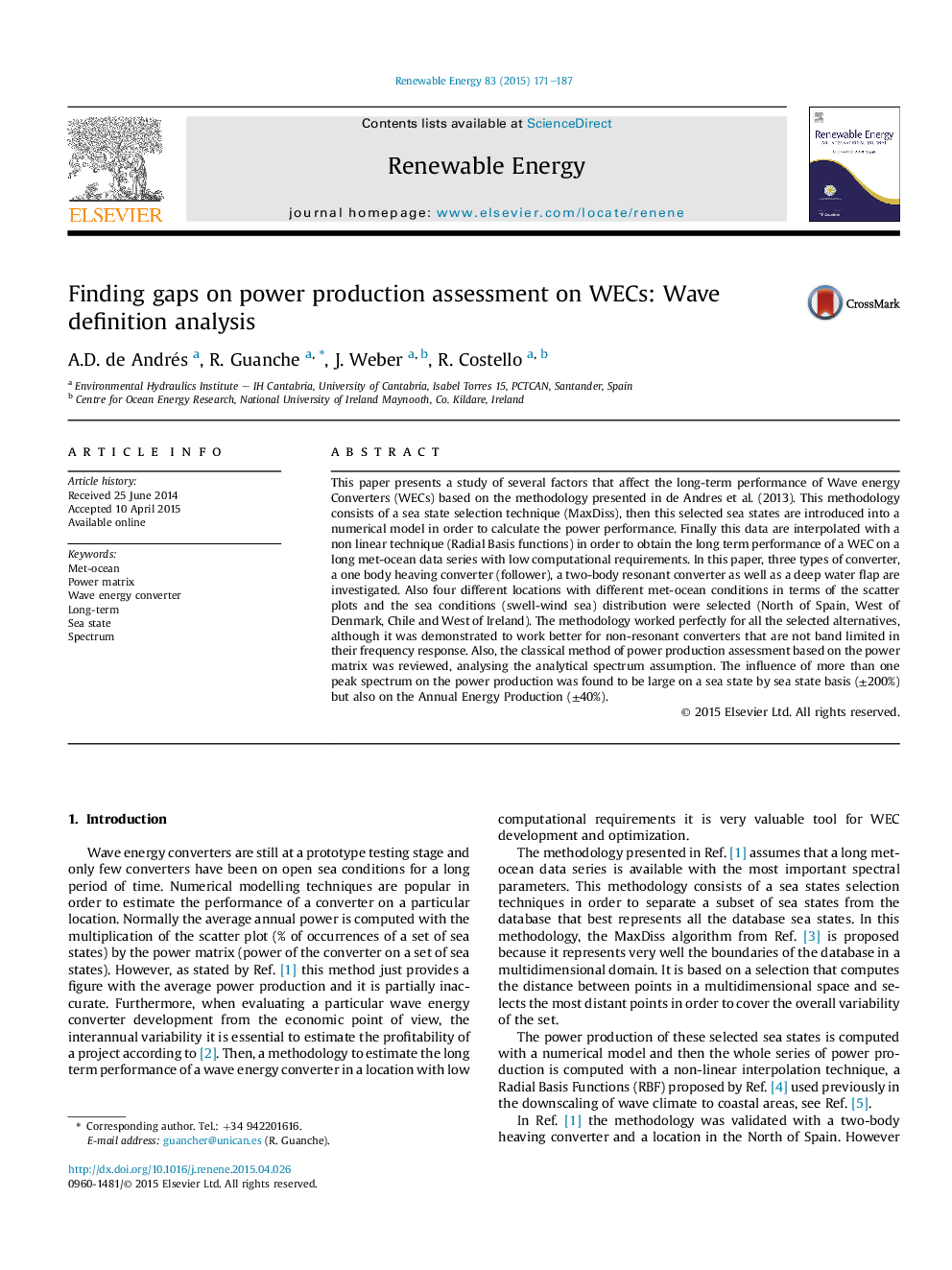| Article ID | Journal | Published Year | Pages | File Type |
|---|---|---|---|---|
| 6766754 | Renewable Energy | 2015 | 17 Pages |
Abstract
This paper presents a study of several factors that affect the long-term performance of Wave energy Converters (WECs) based on the methodology presented in de Andres et al. (2013). This methodology consists of a sea state selection technique (MaxDiss), then this selected sea states are introduced into a numerical model in order to calculate the power performance. Finally this data are interpolated with a non linear technique (Radial Basis functions) in order to obtain the long term performance of a WEC on a long met-ocean data series with low computational requirements. In this paper, three types of converter, a one body heaving converter (follower), a two-body resonant converter as well as a deep water flap are investigated. Also four different locations with different met-ocean conditions in terms of the scatter plots and the sea conditions (swell-wind sea) distribution were selected (North of Spain, West of Denmark, Chile and West of Ireland). The methodology worked perfectly for all the selected alternatives, although it was demonstrated to work better for non-resonant converters that are not band limited in their frequency response. Also, the classical method of power production assessment based on the power matrix was reviewed, analysing the analytical spectrum assumption. The influence of more than one peak spectrum on the power production was found to be large on a sea state by sea state basis (±200%) but also on the Annual Energy Production (±40%).
Related Topics
Physical Sciences and Engineering
Energy
Renewable Energy, Sustainability and the Environment
Authors
A.D. de Andrés, R. Guanche, J. Weber, R. Costello,
